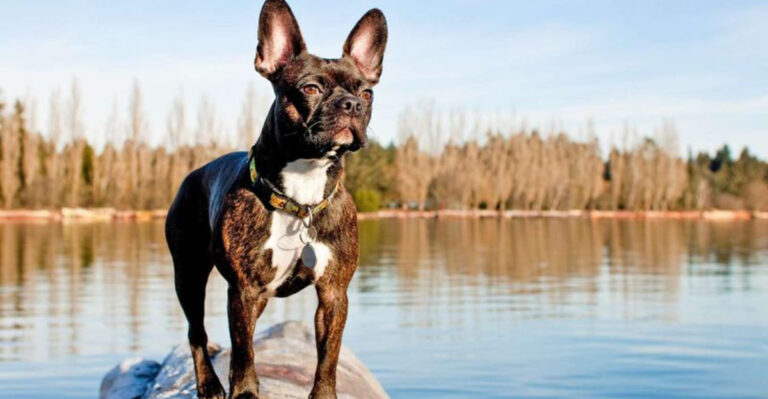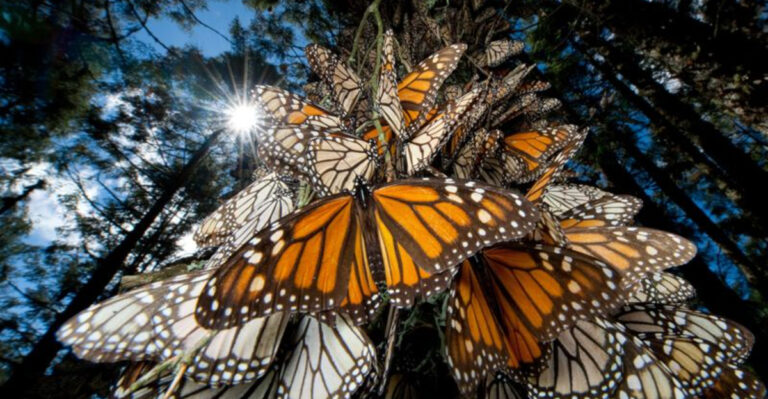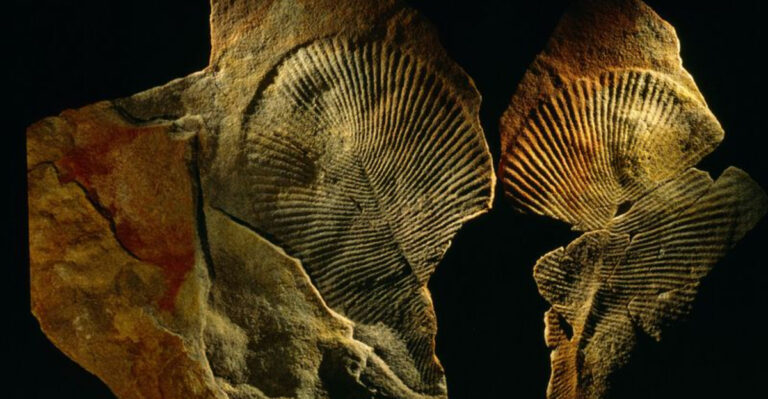15 Most Intelligent Ocean Animals Ever Documented
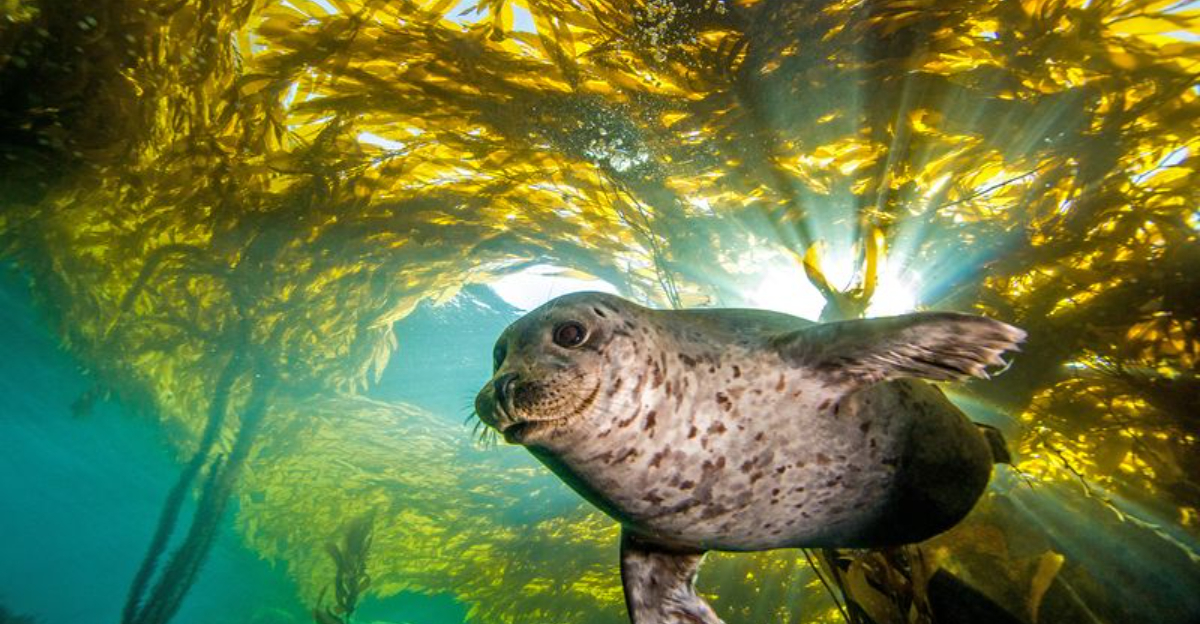
The ocean depths hide some of nature’s most remarkable minds. From problem-solving cephalopods to cooperative hunting strategies, marine animals display astonishing intelligence that rivals many land mammals.
Scientists have documented remarkable behaviors showing memory, tool use, social learning, and even self-awareness among these underwater thinkers.
Let’s explore the brilliant minds beneath the waves that continue to surprise researchers with their cognitive abilities.
1. Bottlenose Dolphins: Nature’s Ocean Geniuses

Bottlenose dolphins possess brain-to-body ratios second only to humans, enabling them to solve complex problems and recognize themselves in mirrors – a rare trait that proves self-awareness. They communicate using unique whistles that function like names, essentially calling each other by personalized signatures.
These marine masterminds use tools by wearing sponges on their snouts to protect themselves while foraging on rough seafloors. Researchers have documented dolphin pods teaching hunting techniques to younger generations, passing knowledge through cultural transmission rather than instinct.
Their cooperative hunting strategies involve sophisticated coordination that requires planning and real-time communication. When working with human fishermen in Brazil, dolphins signal precisely when and where to cast nets – a partnership benefiting both species.
2. Octopus Masterminds: Eight-Armed Problem Solvers
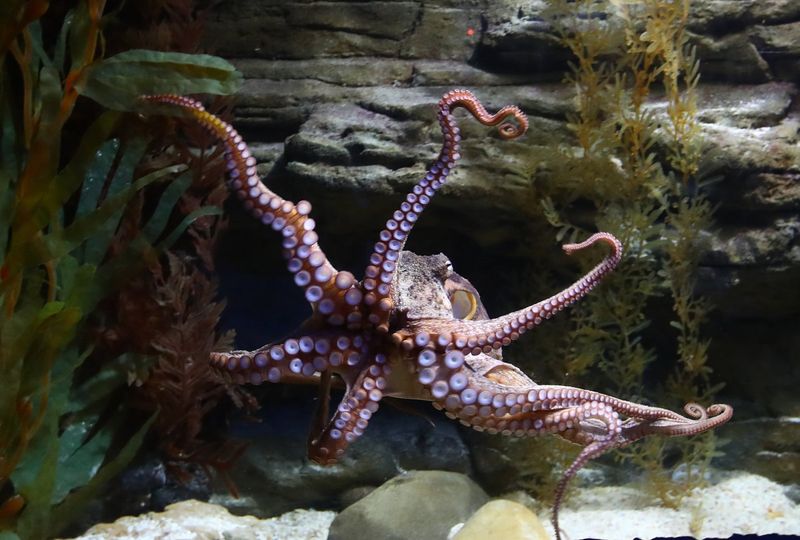
Octopuses stand out as the brainiest invertebrates on Earth, with approximately 500 million neurons distributed throughout their bodies. Unlike most intelligent animals, their nervous system operates differently – two-thirds of their neurons reside in their arms, allowing each limb to problem-solve independently.
Famous escapologists, octopuses regularly outsmart aquarium security systems. One New Zealand octopus repeatedly disassembled his tank’s recycling system. Another at the Santa Monica Aquarium learned to short-circuit lights by squirting water at bulbs when nobody was watching.
Their tool use involves carrying coconut shells for portable shelter and using rocks to barricade den entrances. Most impressively, octopuses can solve puzzles, open childproof medicine bottles, and navigate mazes – all without traditional training methods.
3. Orcas: The Strategic Hunters Of The Deep
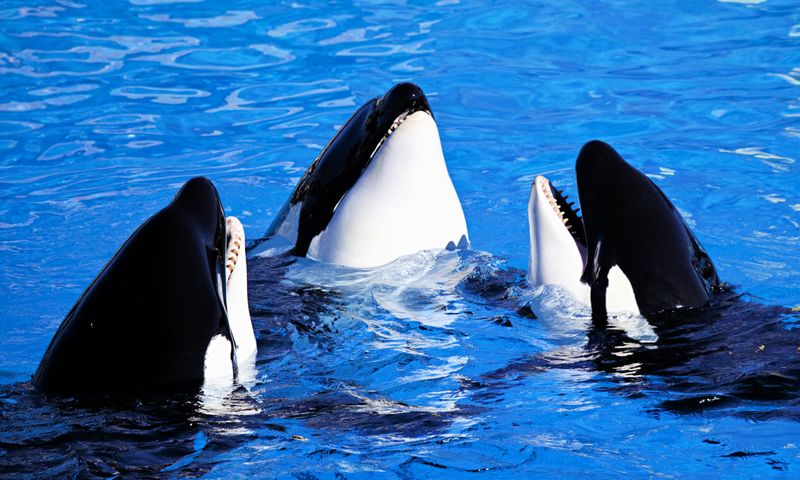
Killer whales possess the second-largest brain of any ocean creature, with an exceptionally developed limbic system governing emotions and social connections. These apex predators demonstrate distinct cultural behaviors – different pods develop unique hunting techniques passed down through generations.
Antarctic orcas create coordinated waves to wash seals off ice floes, a behavior requiring precise timing and teamwork. Some populations intentionally beach themselves to capture prey before wiggling back to safety – a high-risk strategy requiring extraordinary body control.
Orcas recognize themselves in mirrors and show emotional intelligence through strong family bonds. Scientists have documented mourning behaviors when pod members die. Their communication includes complex dialects specific to family groups, essentially creating distinct languages among different killer whale communities.
4. Manta Rays: Surprisingly Self-Aware Giants

Manta rays shatter expectations about fish intelligence with brains proportionally larger than most marine creatures. Their brain structure includes an expanded cerebellum and telencephalon – regions associated with problem-solving and learning. Scientists recently discovered these gentle giants can recognize themselves in mirrors, placing them in an elite club of self-aware animals.
Social intelligence appears in their cooperative feeding behaviors, where groups coordinate movements to maximize plankton consumption. Mantas remember productive feeding locations and return to them seasonally, demonstrating impressive spatial memory across vast ocean distances.
Their curiosity stands out among fish – mantas frequently approach divers, maintaining eye contact and engaging in what appears to be inspection behavior. This willingness to investigate novelty, rather than flee, suggests advanced cognitive processing unusual in the fish world.
5. Sea Lions: The Ocean’s Natural Performers
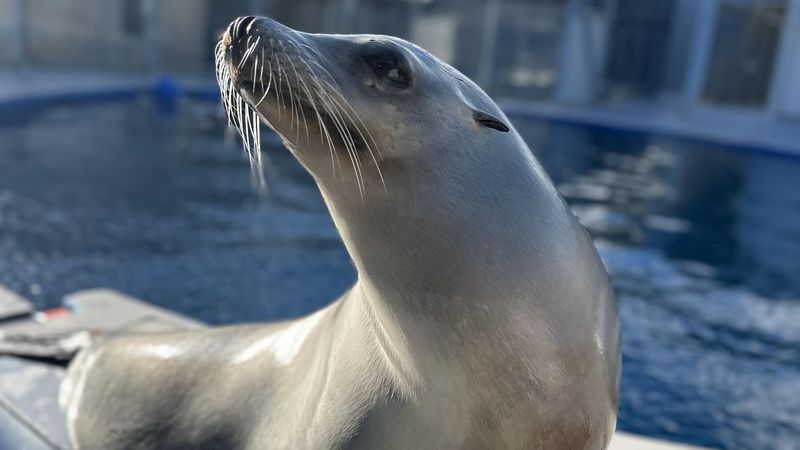
Sea lions combine remarkable intelligence with physical agility, making them natural performers both in captivity and the wild. Their exceptional spatial memory allows them to navigate back to specific breeding grounds after traveling thousands of miles. Researchers have documented sea lions remembering complex tasks for over a year without practice.
These marine mammals demonstrate concept formation – they can understand abstract ideas like “sameness” and “difference” when sorting objects. Their learning capabilities extend to understanding pointing gestures and eye gaze cues from humans, a rare skill outside of domesticated animals.
Sea lions excel at observational learning, mastering new behaviors simply by watching others perform them. This ability to learn through observation rather than trial-and-error demonstrates sophisticated mental processing that few marine species possess.
6. Sperm Whales: Deep-Diving Intellectual Giants
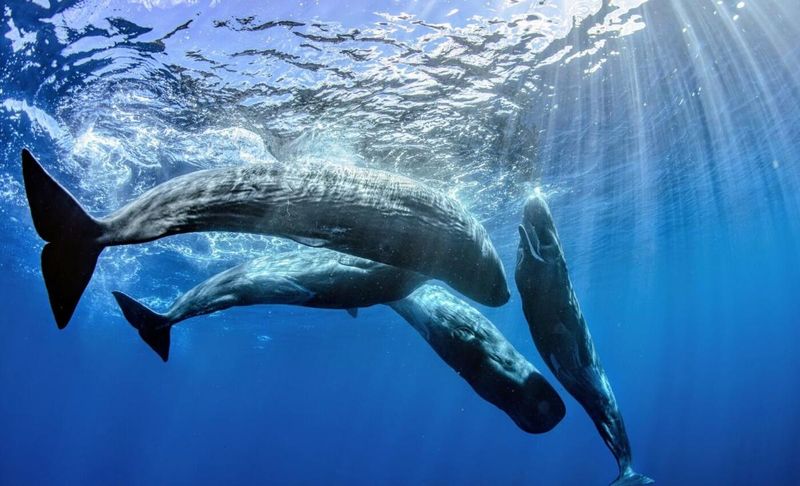
Sperm whales possess the largest brains on Earth – approximately 18 pounds of neural tissue packed with problem-solving potential. These deep-diving mammals live in complex matrilineal societies where knowledge transfer between generations shapes survival strategies and cultural behaviors.
Their communication system utilizes patterns of clicks called codas, which vary between different whale clans. These distinct “dialects” function as cultural identifiers, allowing whales to recognize their social groups across vast ocean distances. Researchers believe each clan develops unique hunting techniques and behavioral norms.
Sperm whales demonstrate remarkable coordination during protective behaviors. When threatened, they form defensive “marguerite formations” – adults circle with heads inward and tails outward, protecting vulnerable calves in the center. This sophisticated defensive strategy requires spatial awareness and real-time communication among multiple individuals.
7. Harbor Seals: Masters Of Human-Like Learning
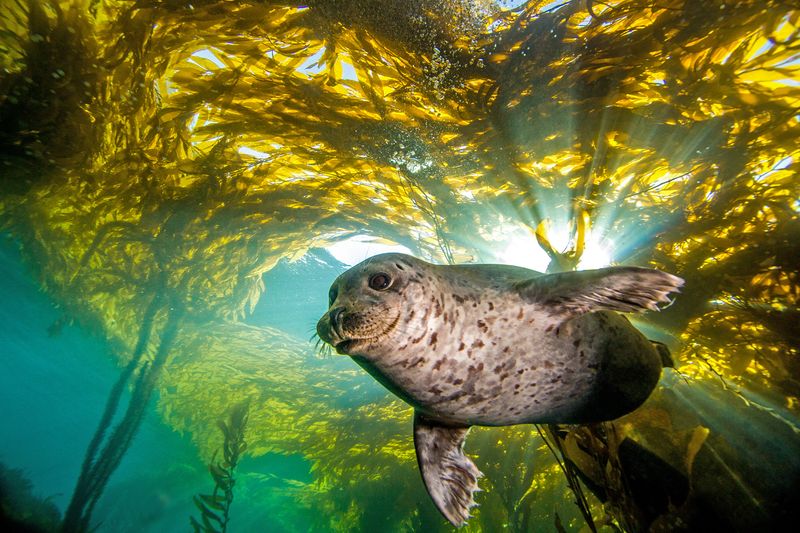
Harbor seals demonstrate cognitive abilities surprisingly similar to primates despite their vastly different evolutionary history. These pinnipeds excel at categorization tasks – they can sort objects into groups based on abstract concepts rather than simple physical traits. One famous seal named Hoover could even mimic human speech, producing phrases like “Hello there” with recognizable intonation.
Their learning style involves understanding rules rather than memorizing specific examples. This allows harbor seals to apply learned principles to entirely new situations – a form of logical reasoning previously thought unique to advanced mammals.
Memory tests reveal harbor seals can remember specific individuals, both seal and human, for years without contact. They also display numerical understanding, distinguishing between different quantities of objects – an ability that helps them track fish schools and assess competing seal groups in the wild.
8. Great White Sharks: Calculated Hunters With Complex Brains

Great white sharks possess surprisingly large brains relative to most fish, with expanded regions dedicated to learning and sensory processing. Their hunting strategies demonstrate calculation rather than mindless aggression – they often perform investigative bites to assess prey before committing to a full attack.
Social intelligence appears in their hierarchical feeding arrangements. When multiple sharks gather at a food source, they establish clear dominance patterns without fighting, using body language and displays instead of dangerous physical confrontations.
Great whites demonstrate impressive spatial memory, returning to specific hunting grounds year after year along precise migratory routes. Some individuals navigate annual migrations spanning thousands of miles between Australia and South Africa. Their learning capabilities allow them to adapt hunting techniques to different prey species and environments, showing behavioral flexibility uncommon in the fish world.
9. Cuttlefish: Masters Of Deception And Memory

Cuttlefish possess the highest brain-to-body ratio of any invertebrate, with neural architecture supporting remarkable cognitive abilities. Their most visible intelligence appears in their skin – they can instantly transform their appearance using specialized cells to create moving patterns, perfect camouflage, and even optical illusions to confuse predators.
Memory tests reveal cuttlefish can remember what, where, and when they ate specific foods – a complex form of episodic memory previously thought limited to mammals and birds. They adjust hunting strategies based on prey availability, demonstrating the ability to delay gratification for better rewards.
Male cuttlefish employ sophisticated deception during mating. Smaller males sometimes disguise themselves as females to sneak past larger rivals, changing both appearance and behavior to complete the illusion. This requires self-awareness, understanding of social dynamics, and complex control over multiple body systems simultaneously.
10. Groupers: Fish That Use Collaborative Hunting

Groupers shatter the myth that fish lack intelligence through their sophisticated cooperative hunting behaviors. These large predators regularly collaborate with completely different species – particularly moray eels – to capture prey that would otherwise escape either hunter alone. The grouper signals to eels using specific head-shaking movements to initiate joint hunts.
Strategic thinking appears when groupers chase prey into crevices, then perform a headstand pointing at the hiding spot – essentially showing their eel partners exactly where to investigate. This referential communication requires understanding another species’ perspective and abilities.
Groupers also demonstrate tool use by carrying clams to rocks and using quick head flicks to smash them open. They recognize individual divers who regularly feed them, approaching familiar humans while remaining cautious around strangers – evidence of long-term social memory unusual in fish.
11. Elephant Seals: Deep-Diving Memory Champions

Elephant seals combine extraordinary physical abilities with impressive cognitive maps that guide their epic migrations. These massive pinnipeds dive deeper than almost any air-breathing animal – reaching depths beyond 5,000 feet where complete darkness and crushing pressure prevail. They navigate these lightless depths using mental maps of underwater topography.
Memory tests reveal elephant seals remember specific feeding grounds across thousands of miles of featureless ocean. They return to exact locations year after year, suggesting detailed spatial memory that functions like an internal GPS system.
Social intelligence appears in their complex beach hierarchies. Males remember their position and relationships within the competitive breeding structure, recognizing dozens of other seals by their unique vocalizations. This social memory prevents unnecessary conflicts and helps maintain stable breeding colonies despite fierce competition for mates.
12. Stingrays: Unexpected Problem-Solvers

Stingrays demolish old assumptions about fish intelligence through their surprising learning abilities and social behaviors. These flat cartilaginous fish can solve maze problems and remember the solutions for months, demonstrating long-term memory comparable to many mammals. They quickly learn to associate specific sounds with feeding opportunities.
Social intelligence appears in their tactile interactions with both other rays and humans. Captive stingrays often approach familiar keepers for physical contact, rubbing against them in apparent displays of affection. They recognize individual humans even when wearing different clothes or approaching from different angles.
Problem-solving abilities emerge when rays manipulate their environment to access food. They’ve been documented moving objects, digging strategically in sand, and even splashing water to dislodge prey items. Some species coordinate movements in groups to herd small fish – a collaborative hunting strategy requiring social coordination.
13. Walruses: The Arctic’s Tool-Using Thinkers
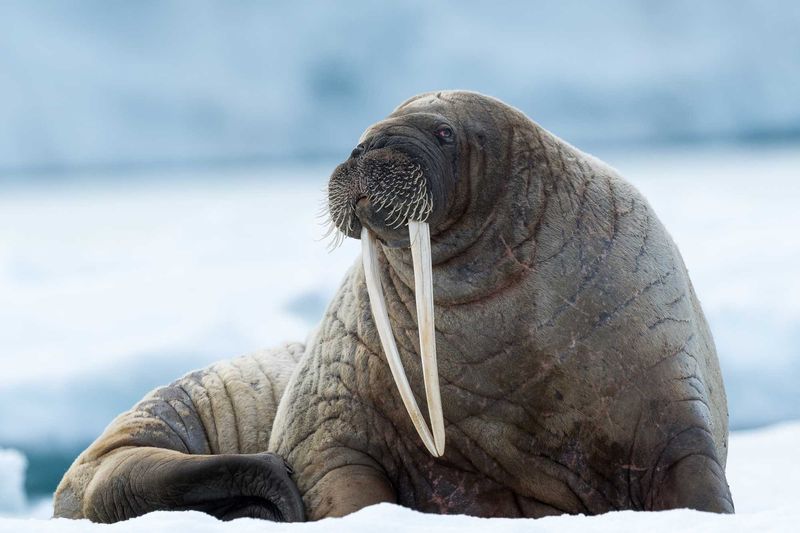
Walruses combine physical strength with surprising cognitive flexibility, particularly evident in their tool use. These massive pinnipeds use floating ice blocks as platforms for resting, giving birth, and avoiding predators – carefully selecting ice with appropriate thickness and stability. Some individuals use their tusks to break suitable pieces from larger ice sheets.
Their problem-solving appears when hunting clams – walruses use water jets created by powerful exhalations to clear sediment from buried prey. This technique requires understanding cause and effect relationships between their actions and environmental changes.
Social intelligence emerges in their complex communication system. Walruses produce at least 13 distinct vocalizations with specific meanings, including warnings, mating calls, and mother-calf recognition signals. They maintain strong social bonds within herds, with adults protecting unrelated calves from polar bears and orcas – evidence of cooperation beyond immediate family groups.
14. Parrotfish: Reef Architects With Spatial Intelligence
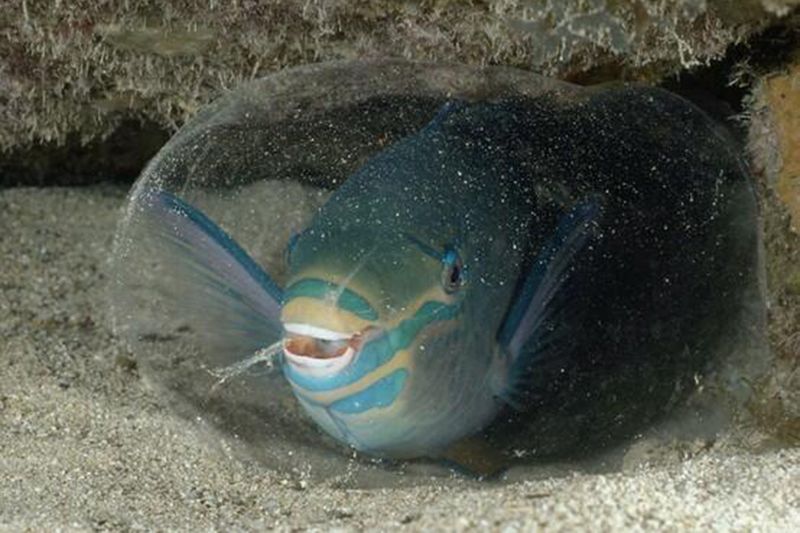
Parrotfish display surprising cognitive abilities focused on navigation and spatial memory. These colorful reef dwellers create detailed mental maps of their territories, memorizing specific cleaning stations, feeding areas, and sleeping spots across complex coral landscapes. They navigate these underwater mazes with precision even when visual landmarks change.
Problem-solving emerges in their innovative sleeping strategy. Many parrotfish species produce protective mucus cocoons before sleeping – a behavior requiring planning and foresight. This mucus mask disguises their scent from predators and possibly serves as an early warning system if disturbed.
Social intelligence appears in their complex reproductive strategies. Some species maintain harems with a dominant male monitoring multiple females across wide territories. If the male disappears, the largest female undergoes a complete sex change to become the new male – a transformation requiring sophisticated hormonal regulation and behavioral adaptation to an entirely new social role.
15. Archerfish: Sharpshooters With Physics Knowledge
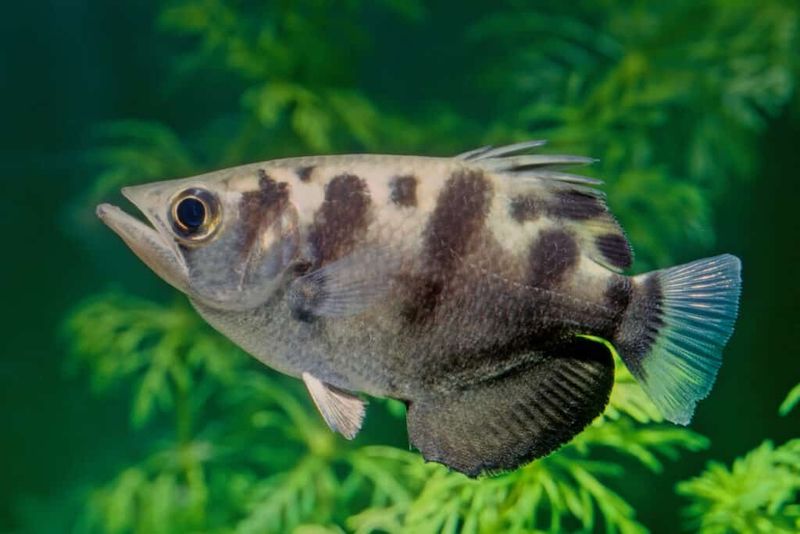
Archerfish demonstrate extraordinary cognitive abilities through their precision hunting technique – shooting down insects above water by spitting powerful water jets. This skill requires complex physics calculations, accounting for light refraction at the water-air boundary, target distance, and gravity effects on the water stream.
Learning studies reveal archerfish can recognize specific human faces, distinguishing between different people even when only partial facial features are visible. They remember this information for months, approaching familiar keepers while avoiding strangers.
Their problem-solving abilities extend to tool modification – archerfish adjust the force and volume of their water jets based on target size, distance, and attachment strength. They can hit moving targets by predicting future positions, essentially solving complex trajectory problems. Most impressively, young archerfish learn this technique primarily through observation rather than trial-and-error, suggesting advanced observational learning unusual in fish.

